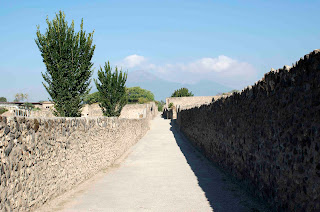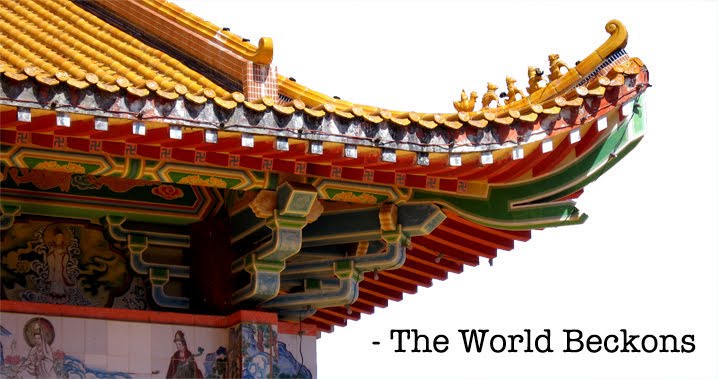 |
| Pompeii, where all roads lead to Mt. Vesuvius. |
Mt. Vesuvius looms tallest of all.
Two thousand years ago, it collapsed upon itself during an earthquake, then erupted – eventually burying Pompeii under more than eight feet of debris. With lava travelling at speeds of up to 80 kilometres an hour, those living in the city simply did not stand a chance.
Homes were crushed under the weight, and all inhabitants died horrible deaths brought upon by the hot ash and gas.
Pompeii simply ceased to exist in 79 A.D.
The silver lining is that the manner of the city's demise is also the reason it has been so incredibly well preserved. It is now one of Europe's most important historical sites.
Thanks to the massive amounts of lava spewed from Vesuvius's roaring maw, however, the crumbled remains of the former port city now rest more than a mile from water. Yet, amazingly, many of the ochre-coloured frescoes that adorned the walls at the time can still be seen today.
Stones of the original road, too – built in 200 B.C., and embedded with small white lava rocks to reflect the moon as lighting – remain clearly etched by the chariots that traversed them more than two thousand years ago. That got me.
At the time, these chariot drivers would have had no idea of the brimstone that was to follow, nor of the future relevance of the marks they were making on the world.
Somewhere in there, I think there's a message for us all.

No comments:
Post a Comment